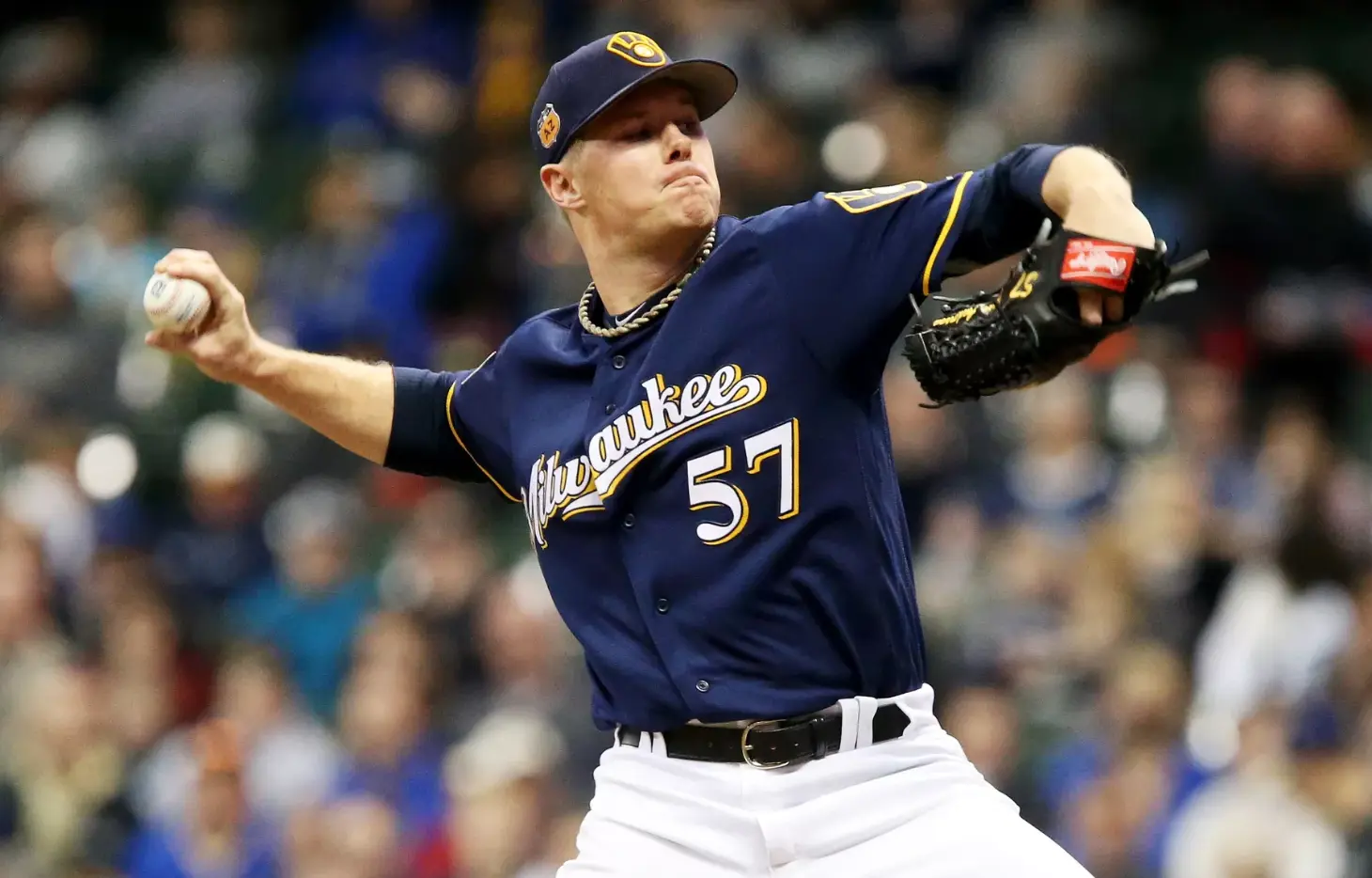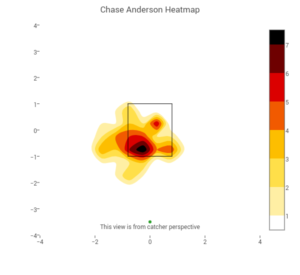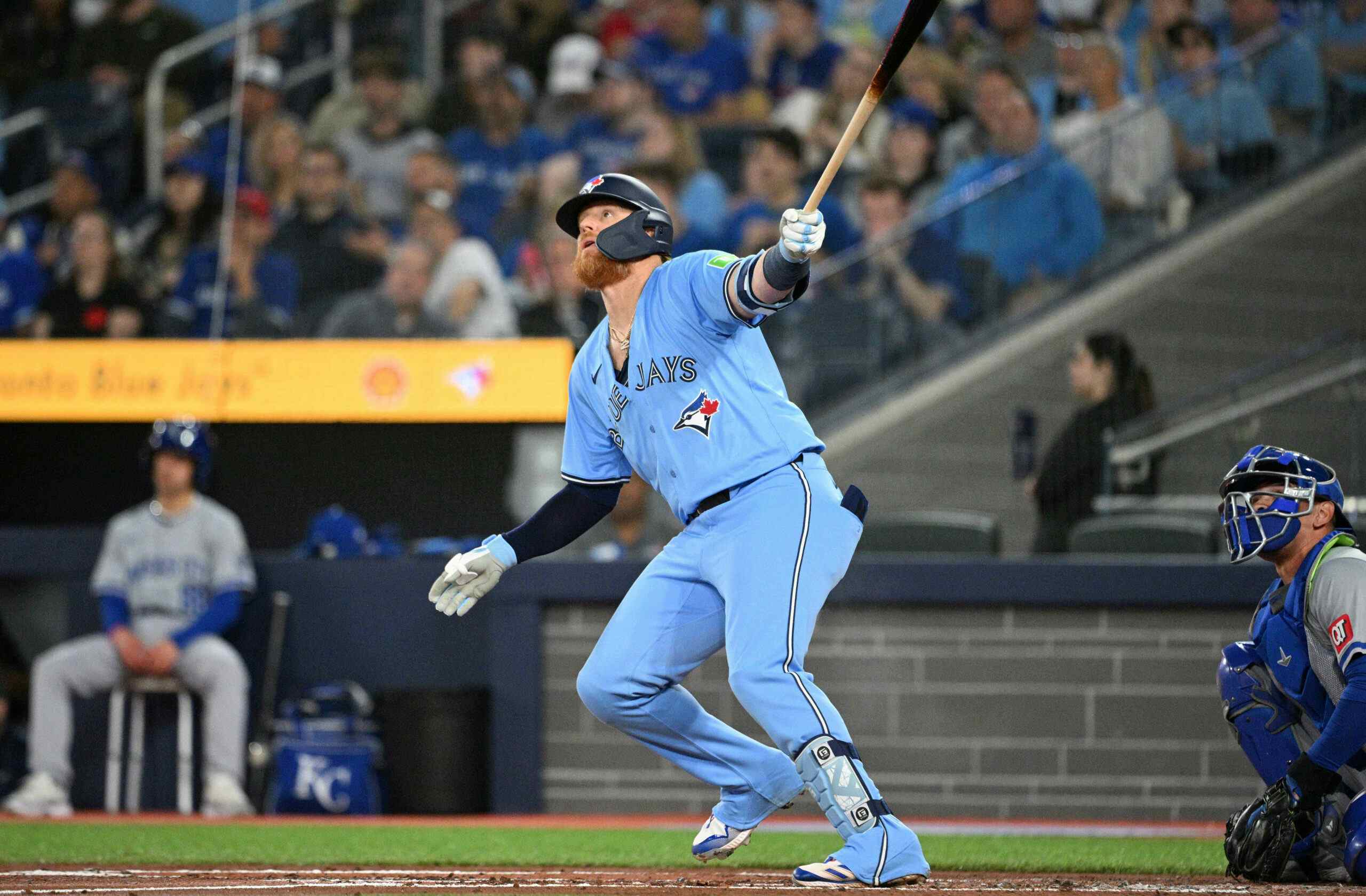Finding the Upside in Chase Anderson

The Blue Jays acquired Chase Anderson from the Milwaukee Brewers yesterday. Anderson comes to Toronto as a reliable innings eater, throwing around 140-150 innings with an ERA around four each season. He brings with him a five pitch mix, most notably an elite changeup.
Using Fangraphs Pitch Type Linear Weights Anderon’s changeup has been worth 28.6 runs above average since he joined the league in 2014, a total that places him 18th in the majors. He threw the change 23.3% of the time last season, his second most used pitch behind his four-seamer (41.7%). It was his most effective pitch last season, batters hit just .188 and had a 31.2 whiff rate, both tops among his five pitches.
There are two things that make this pitch so effective. It’s spin and movement. Anderson’s changeup has an average spin rate of 2311 rpm’s, per Baseball Savant, which ranked 14th among pitchers who threw at least 250 changeups. All that spin keeps the pitch on the same plane, Anderson’s pitch had three inches less drop and 9% less drop than similar changeups. This movement is similar to that of Thomas Pannone (albeit from the left side) and Mike Soroka. Horizontally is where Anderson’s pitch really stands out. As you can see in the clip above the pitch moves a fair amount side to side. The pitch breaks 17.7 inches on average which is 4.1 inches and 30% more than similar changes.
His changeup doesn’t get many ground balls, just 32.4%. Batters were able to get under it and had a 45.1% flyball rate. This is why Anderson gave up as many home runs as he did. He is a flyball pitcher, he had a 44.1% flyball rate this past season. His best pitch at getting ground balls is his curveball, which was easily his worst pitch. It has a -8.6 pVal and a .351 batting average against. He threw that pitch just 10.3% of the time, the lowest of his career, and considering how poor it was that likely drops considerably again this season.
Back to the change, Anderson doesn’t get many chases outside of the strike zone, just 36.5%, which is the most out of any of his pitches but is not an elite rate. He has to rely on getting swings in the strike zone, take a look at his whiff heat map.

Looking at Anderson’s pitch usage there is an argument that he should be using his change even more than he has. Especially against righties.
Pitch Usage – from BrooksBaseball
| Fourseam | Sinker | Cutter | Curve | Change | |||
| LHH | |||||||
| All Counts | 30% | 12% | 21% | 8% | 29% | ||
| First Pitch | 22% | 21% | 19% | 19% | 19% | ||
| Batter Ahead | 31% | 11% | 23% | 4% | 31% | ||
| Even | 25% | 18% | 20% | 13% | 25% | ||
| Pitcher Ahead | 36% | 4% | 21% | 6% | 33% | ||
| Two Strikes | 42% | 4% | 16% | 5% | 33% | ||
| RHH | |||||||
| All Counts | 54% | 4% | 10% | 12% | 20% | ||
| First Pitch | 59% | 5% | 11% | 17% | 8% | ||
| Batter Ahead | 53% | 4% | 9% | 7% | 26% | ||
| Even | 55% | 4% | 10% | 15% | 16% | ||
| Pitcher Ahead | 54% | 3% | 9% | 12% | 22% | ||
| Two Strikes | 56% | 2% | 7% | 11% | 24% |
He uses his fastball over 50% of the time to right-handed hitters. As a righty facing Anderson there is a pretty darn good chance you are going to see a fastball at some point in the at-bat. That makes Anderson very easy to predict, and right-handed batters took advantage putting up a .368 wOBA against the four seamer.
His four-seamer has below average spin, it has average velocity and has just slightly above average rise and break. It is a fastball that is closely comparable to the one thrown by Brock Stewart, who was just released by the Blue Jays.
He should drop the usage of his four seamer in favour of his cutter. Anderson averages 90mph with the cutter and topped out at 94, giving him good separation from his change which averages 82mph. His cutter gets ground balls, 42.4%, and he held batters to just a 58 wRC+. Small sample but righties had just .236 wOBA against the pitch. His cutter has solid spin coming in at 2382 rpm’s. It has 21.2 inches of vertical drop which is 4.4 inches and 17% more than similar cutters, which rates 10th in the league.
Even at 31 years old there is upside in Chase Anderson. He is very predictable with his fastball against right-handed batters. His changeup is one of the best in the league and he should use it even more. He has good cut-fastball which is effective and could be used more to keep batters off of his four-seamer. It’s not a flashy move but neither was the last time the Blue Jays acquired a changeup artist from Milwaukee and that worked out pretty well.
Recent articles from Paul Berthelot





